How I Lost My Mind and Became a Crazy Kali Bhakta: A Theophany by William Clark
INTRODUCTION
The word darshan is a Sanskrit term that means “seeing,” and specifically refers to perception of the divine. In Hinduism, darshan is a broad concept which manifests in a variety of ways. Among other things, meeting and interacting with a saintly personage, visiting a holy place, and gazing upon the physical form of a deity (its murti) are all regarded as valid forms of darshan. Darshan also refers to the phenomenon of theophany––the direct “seeing” of a deity by a human being.
What follows is an account of my personal darshan of the goddess Ma Kali as it occurred on January 8th, 2000. This theophany had the profound effect of completely changing the entire course of my existence. While there have been many spiritual experiences throughout my life, for me this has been (and no doubt will be) the most important. After that fateful night, my life has never been the same.
THE VISION
I was walking home in the early evening, approximately 7 or 8 p.m. The night was comfortably cool and it felt good to be roaming about Philadelphia, when I was suddenly overcome with an ecstatic rush of energy. It felt as if a current of electricity was coursing through my spinal column and radiating outward through my body. My ability to walk began to waver and my head was buzzing as if my mind was being fed a stream of thoughts. In my journal, I wrote that it seemed as if a “tape recorder was playing” inside of my head. Every time I blinked my eyes, I saw three eyes staring back at me: one on the left, one on the right, and a vertical eye in the center. They appeared self-luminous and surrounded by a field of darkness. Strange as it may sound, I believed that a message was being transmitted to me by something beyond myself. Fearing I might fall over, I made my way toward an empty spot in the shadows next to a building so I could lay down. Images flashed before me. Again the three eyes, then a tongue distending like a serpent. My perception of the outside world began to fade and I saw the image of a spider in the center of a dew-covered web superimposed over everything. It looked just as real as anything you might see wandering through a field in the early morning hours. This somehow brought with it an immediate sense of comfort right before I rested myself upon the ground and closed my eyes…
For all intents and purposes I leave my body. It all begins with an impetuous, intoxicating drum rhythm: Da-doom Da-doom Da-doom. I find myself floating freely in an indescribably void where I am being drawn toward a dancing female figure, massive as if trying to look at a mountain up close. Her black form appears illuminated as if she is whirling about in the center of a circle of invisible fire. She moves wildly, raising her left leg behind her and spinning counter-clockwise, then effortlessly crouching down and again leaping to her feet. I hear a loud, metallic Whoooooooshing! sound (like a sword being drawn in a Chinese kung fu film) as a golden five-headed serpent projects up from behind and over her head forming a canopy before it immediately dissolves.
She is beyond perfection. Gazing upon her intoxicates my mind with the desire to be one with her––not in a physical sense, for she is infinitely vast, but to utterly lose myself in her love. Instead, I feel an intense need to completely merge into her. The goddess’s movements are hypnotic and undulating, she turns in circles while extending her limbs in a manner both chaotic and graceful. Gazing upon her, she was indescribably black, and yet at the same time full of colors. Now and again, she strikes different exaggerated poses for a momentary flash as if conveying specific moods to me. Whenever she does this, incredibly complicated and beautiful patterns appear, tracing and emphasizing the contours of her form. The colors I see in her are all earthy pigments: yellow ochre, milky white, a rich beige, and blood red. As I approach more closely, the mood drastically changed as a pair of hands with palms facing toward me, fingers slightly bent, moves across the vision in circles accompanied by a tinkling sound like wind chimes as star-like sparkles of light trail off of them. I laugh to myself at how ridiculous and out of place this image seems compared to the rest of it.
The hands signal a transition in the vision which immediately changes. Now I find myself inside of a painted, two-dimensional landscape where I hear the sound of tuned string instrument being plucked in a modal fashion. It is a vast grassy plain, lush and beautiful green, with a large rounded hill in the center. The sky is crystalline and bright, perfect azure blue. Above all is a warm glowing sun, yellow blending into orange. I am pulled in and to the far left side where a man enters the scene. I float up close and around the front of him. He has black hair, an olive complexion, a full mustache, and the type of half-closed dark and dreamy almond eyes that you might see in a Mughal painting. A white thread is draped over his shoulder and around his body in a closed loop. He is wearing a loincloth. Even though this man does not resemble me physically in any way, I completely identify with him as if I am somehow watching myself.
I hover around him as he walks toward the hill which is the same height as the man. When he reaches the hill I am behind him, and his ascent seems awkward because everything is flat in this world. His jerky movements resemble the climbing of a ladder in an old video game or some cut out animation, the arms and legs moving on opposite sides in a stilted manner. Suddenly I am pulled far back to where I can see the entire panoramic view of the landscape with the hill in the center. He reaches the top, sits down crossing his legs, then places his hands in his lap wraps his fingers together in a knot. The sun is perfectly aligned behind the seated figure and forms a corona around his body. He closes his eyes and for a moment, everything is perfectly still.
Then comes the scream. Tranquility is replaced by terror when he suddenly emits this spine-chilling scream which resounds throughout the landscape as his eyes, bulging out from his head, slowly turn upward, the vessels filling with blood. It is as if energy is being driven up his spine toward the top of his head. His bloodshot eyes well up and red begins to seep out mixing with the surrounding blue like mingling pigments of water color on paper. I hear a chopping sound, Thwack! – and as his eyes continue to roll back his head begins to separate from the neck.
Again the hands wash over the scene, albeit much more quickly than the first time. I hear the drumming sound Da-doom Da-doom Da-doom and she is dancing again, this time clenching the man’s severed head in her left hand. Like her, the head is also three-dimensional and life-like. Holding it by the hair, she raises it up toward her mouth. For a moment her mouth is all I see, and I hear a Whoooosh! sound as a jet of blood sprays directly from the neck into her mouth. She gulps everything down without a spilling a drop.
The vision cuts back to the earlier scene, and I see the man’s headless body sitting cross-legged on top the hill, the sun perfectly behind it. Tranquil music. Again there is a Whoooosh! sound and a stream of blood issues from the neck, arcs up and out toward the right, then gently touches the ground below where it forms a sinuous river. Another Whoooosh! and blood shoots up from the opposite side, bends toward the left, and kisses the ground where it forms a river, winding snakelike.
At this point I start to become aware of the outside world again as the vision begins to fade against my will. I desperately try to hold on to her image as an indescribable sense of longing wells up from deep inside of my soul. As if waking from a dream, I feel my normal consciousness beginning to return. The last thing I see are her three eyes with the name Kali echoing over and over again in my head.
AFTERWORD
Oddly enough, I perceived that a very palpable struggle between my conscious and unconscious mind began taking place right after this visionary experience. It seemed as if my conscious mind wished to block the entire event as it was such an utterly overwhelming, out of place, and confusing occurrence. I immediately made my way home, grabbed a notebook, then proceeded to write down everything I had seen to the best of my ability. Having finished, I headed out to a house party being held by a friend and did not mention a thing about it to anybody. After waking up the next day and looking over the frenzied words I had scrawled down the previous night, I realized the personal enormity of what had occurred to me. Again, I felt intoxicating waves of bliss course through me as I mentally dived back into that place.
My life was radically transformed by this experience and I have been madly in love with the goddess ever since. In many ways, particularly when it comes to issues of material stability and/or normal relationships with others, it has proven to be quite devastating. Instead of things magically falling into place for me, they have generally gotten harder and I have suffered greatly in my attempt to lose myself in her love. Regardless, for me it was without doubt the greatest blessing of my life. Kali called me to that which I desire most––union with her through struggle.
At the time this occurred, I knew absolutely nothing about Hindu dharma and had no interest to learn about it. I grew up without any Indian friends, so naturally there were zero cultural connections. In pre-internet days (for me at least!) when this happened, I may have come across a few random images of Kali in passing, but definitely nothing like I saw during my vision. Her form was purely anthropomorphic without the attributes of extra arms, garland of heads etc. Even more so, there is no way that I could have been exposed to and understood the very specific and esoteric tantrik symbolism that was revealed to me during this experience. It is something that I cannot rationally explain in any satisfying way, even though I have definitely tried while going over this in my head again and again. As it was a life-shattering event for me, there have admittedly been times when I struggled with accepting something so outrageous as my new reality, but ultimately I know what is true in my heart and the love I feel for her burns away all doubt.
After years of immersing myself in the worship of Kali and trying my best to study Hinduism and understand its indescribably complex devotional culture up close, I find myself still discovering new layers of meaning in the things I saw that night. Since this is such an emotionally charged and personal thing for me, I am certain this will endure for the rest of my life as Ma Kali guides me back toward her in the way that she wills.
Here is a brief interpretation of some of the symbolism. It is based both on direct personal understanding as well as concepts gleaned from researching various sources.
THE SPIDER
The vision was prefaced by the image of a spider stationed in the center of a web that was spread across the tops of tall grass and glistened the early light of dawn. This looked as real as something I would commonly see while exploring the wooded areas and fields near by house growing up. As a childhood memory, it is the type of image that evokes feelings of nostalgia and comfort. More importantly for me, this immediately triggered thoughts of the mother goddess. As a teenager who always had and interest in occultism and magic, I had previously devoted myself to worshipping Pallas Athena for an extended period of my youth. She is intimately associated with weaving and in Greek mythology transforms the mortal Arachne (source of the word arachnid) into a spider. So I have a readymade association between the divine mother and spiders. It was like a familiar signal telling me to chill out and prepare me for what was to come. Not surprisingly, spiders appear in the creation myths of various cultures such as the Ancient Egyptians, Native American tribes, African folklore and other places. Not only do the females of this arachnid order often consume the much smaller males during copulation in an act of sexual cannibalism, but it is the females who we see weaving and devouring their own self-created webs in repeating cycles. The spider is thus a naturally perfect expression of the feminine power in nature which continually creates and destroys only to create anew. Furthermore, the female black widow spider even displays on her underbelly a bright red hourglass––a symbol of time familiar to us all. The philosopher Alan Watts likened the Buddhist concept of Indra’s Net (a metaphor for the interconnectedness of all things) found in the Avatamsaka Sukta to a dew-covered spider’s web:
Imagine a multidimensional spider’s web in the early morning covered with dew drops. And every dew drop contains the reflection of all the other dew drops. And, in each reflected dew drop, the reflections of all the other dew drops in that reflection. And so ad infinitum. That is the Buddhist conception of the universe in an image.
THE MAN WHO LOSES HIS HEAD
I immediately identified this man with myself. Somehow I just knew he was me. This man was also very much a Brahmin. It was quite some time later and only after getting into books on Hinduism that I learned that the thread he was wearing actually means something. It is called a yajnovipitam and is conferred upon a Brahmin child during a right of passage ceremony called upanaya. The brahminical thread is not something I would have known about without prior knowledge, so I am pretty impressed if my unconscious mind can spontaneously spit out such things accurately. Hopefully one day it figures out how to pull off the same trick with something more useful like lottery numbers.
THREE RIVERS OF BLOOD
In tantrik concepts of esoteric anatomy, the human body has three major energy channels: ida, pingala, and sushumna. Ida (lunar) and pingala (solar) are found on the left and right sides of the body respectively, while sushumna is the central channel corresponding with the spinal column. Now the Sanskrit word for these channels is nadis, meaning “rivers.” I specifically used the word “rivers” in my notebook when I described the two streams of blood I saw issue from opposite sides of the seated decapitated figure’s neck. The characteristic way that each stream arched up and then out from the neck was something that I saw later on, clearly depicted in representations of the fierce tantrik goddess called Chinnamasta (she who is without a head). Over the years, whenever I have been asked to describe my vision to practicing Tantriks, they invariably mention her name and say that what I saw is intimately bound with her in some way. I cannot say why that is, but I make sure to offer her flowers whenever I come across one of the rare temples dedicated exclusively to her worship.
INTERPLAY OF TIME AND SPACE / IMAGE AND SOUND
The entire vision was strongly characterized by a sharp contrast between two different scenes: Kali dancing in three-dimensional space, while the landscape portion with the man was flat and two-dimensional. Each of these had its own individual soundtrack. While Kali threw herself around wildly to a pounding drumbeat, the landscape painting was accompanied by strings plucked in a modal fashion. One could easily draw various conclusions based on this dichotomy.
The name Kali is the feminine form of Sanskrit words meaning both darkness and time. Everything that we can perceive is continually transformed by the power of time. From the infinitely vast to the infinitely small, a cosmic rhythm permeates the cosmos––unimaginably vast whirling galaxies, an ever revolving earth orbiting the sun, the cycles of our daily life, and the ceaseless spinning of atoms are all interconnected through the principle of time. In music, a strong beat not only keeps time, but is, by extension, a human expression of this universal principle. In Hinduism you find Shiva, also known as Mahakala (Great Time), carrying the damaru (hour-glass shaped hand drum) as one of his attributes.
Within our human body, it is a beating heart that generates the very life pulse at the center of our being. Soon after my darshan, I was sitting by myself and meditating on the dance of Kali, when I had a sudden epiphany accompanied by waves of bliss: that delightfully thunderous and oscillating Da-doom Da-Doom Da-doom rhythm that I heard was the expanded sound of my beating heart. I cried and thanked her over and over again for revealing something of the true essence of what I am. Even though I did not completely understand it, I knew that Kali dances in my heart. It was years later that this seemingly abstract realization crystallized for me when I began reading over translations of Bengali Shakta devotional songs. Repeatedly in the lyrics of songs dedicated to Kali, there are direct references to the goddess dancing within in the heart of her devotees.
“Because you love cremation grounds, I have made one of my heart so that you Black Goddess of the burning ground can always dance there… Come, Ma, dance to the beat: I’ll watch you with my eyes closed.” –Ramlal Dasdatta
“She’s playing in my heart. Whatever I think, I think her name. I close my eyes and She’s in there garlanded with human heads.” –Ramprasad
“O Mind! Meditate on Kali, terrific of mien, in thy heart… Install the Goddess of Bliss in thy heart joyfully. Kindle the fire of knowledge and see the Divine Mother’s exquisite beauty.” –Ramprasad
“Keep dear Mother Kali, with love, in your heart. O Mind! Let us see Her and nothing else.” –Ramprasad
“O Tara! You dwell in my heart. O Mother! You are in my heart. O Mother, the Serpent Power! The Ganga is to the right, Yamuna is on the left. And the Saraswati flows in the center.” –Ramprasad
As for the contrasting string music during the scene with the man losing his head I have a few ideas. In classical music, a modicum of training is required just to understand what is going on. It is very much a cultivated product of the mind, whereas a pounding drum beat is immediate and primal. So, in a general way, you could describe one as developing from the mental realm with the other springing spontaneously from the heart. The greatest realized devotees of Kali are always described in terms of madness; their attainment lies in completely losing their mind for the goddess who dances in the center of their being.
A few years back, I got to observe water buffalo sacrifices while I was at the Kamakhya Mandir in Assam during Durga Puja. Every time one of the animals was decapitated, an assistant who had been holding it by the horns would immediately raise the head up, over, and behind his back where another man would catch the fresh blood spilling from the neck in a bowl, which was then taken inside the temple to feed the goddess. As I witnessed this spectacle up close, I felt those familiar bliss waves of ecstasy wash over me as my mind travelled back to that visionary experience from so many years ago. For me, it was another piece of the puzzle falling into place. Ma drinks from the central channel swallowing the ego.
THE HOLY MOUNTAIN
The mountain is a universal symbol representing (among other things) the leaving behind of the material world and ascent toward the heavenly realm. In diverse traditions scattered around the globe there is a correspondence with the ascension of a mountain and the mystical journey of man. Think of the shaven-headed Buddhist monks living in mountaintop monasteries, Moses receiving the ten commandments on Mt. Sinai, the Greek gods dwelling upon Mt. Olympus, Lord Shiva meditating on Kailash etc. This symbolism is ubiquitous. To conquer the mountain is to conquer oneself. In my notebook, I specifically wrote that the hill was “the same size as the man.” It was the same size as he man because it was the man.
LOSE YOUR MIND AND FIND YOUR HEART
Over the years, as my life progresses and I seek to cultivate Kali consciousness, I periodically reflect on this visionary experience. So many things seem to make perfect sense and yet so many questions remain. “Why me?” is something that I do not really bother trying to figure out. What I do know is that Kali is my ishta devi (beloved personal goddess). She is the central pivot of my life, and the experience of receiving her direct darshan undoubtedly altered the entire course of my existence. Since then, I have tried my best to apply myself to the study of Indian religion and culture in a way that feels appropriate for me. Studying the Bengali language, music, and making pilgrimages to the Great Mother’s holy sites are some of the ways that my devotion to her is integrated with my life. My bond with Kali is something that I hope continues to grow and deepen as I strive to make union with her the only goal. This journey has not been easy: struggle, opposition, and loss have characterized it from the beginning. Despite the obstacles involved in completely re-orienting my life, it is a challenge that I joyfully embrace and would not have it any other way. If you truly love something, then sacrificing your life for it is pure gain. And the whole thing is really about love.
The love I have for Kali trumps all considerations of rationality. It is a burning all-encompassing love that has even resulted in some people back home thinking that I am crazy. For me this is a wonderful thing. In the modern world, and particularly in the west, there is practically no acceptable place for the type of direct visionary spiritual experiences that have guided human beings throughout the course of their existence. I cannot deny what happened to me and the obvious transformation which has taken place in my life is something that is readily apparent for all to see. How outside observers may choose to interpret it is up to them. As far as I am concerned, offering my love to Kali as much as I can while I am able to do so is infinitely more important than worrying about what others might think of me. If my sincere approach to devotion shakes some people up and encourages them to examine things in a different way, so much the better. If I manage to inspire even one person to connect with Ma in a deeper way, then for me that is the greatest blessing and means I am doing a good job.
While I do not expect most people to completely empathize with the intense spiritual conviction which guides my life, perhaps they would feel differently if they were to experience something as intense as I did on that night. After all, how is one supposed to react to such a thing? For me, there was really never a choice. I fell in love with Kali, and vowed to place my entire life, like a red hibiscus flower, at her feet. Throughout human history, theophany has always been a fundamental, driving aspect of the religious experience, but in our upside-down modern world there is practically no socially acceptable place for it. Luckily for me, fitting in was something I never really cared to do anyway.
As the great mother of everything that was, is, and ever shall be, Kali lovingly accepts all of her children who sincerely cry out seeking her grace. Looking into the history of her devotional bhakti cult, we find that she has always been comfortably associated with social misfits, outcasts, and “crazy” people. Her most-beloved devotees such as Ramakrishna Paramahamsa, Ramprasad Sen, Bamakhepa, Kamalakanta Bhattacharya, and Bhaba Pagala defied social conventions and were initially labeled as madmen by people who later came to venerate them as saints. Being a western devotee of Kali currently residing in India, I cannot help but look at my own spiritual path from various angles. In the USA, being open about devoting yourself to a deity based on a direct vision is the kind thing that is likely to result in a pill prescription. In India, people often tell me that I am blessed. While I do not think there is anything special about me at all, I do know that the ability to freely express my love for Kali has led not only to the most rewarding experiences of my life, but the forging of relationships with people that I will dearly cherish until the ends of my days. The verdict is never out, I might be crazy, but at least I know that if I am crazy for her then I am in very good company.
KALI IS LOVE – JAY MA KALI

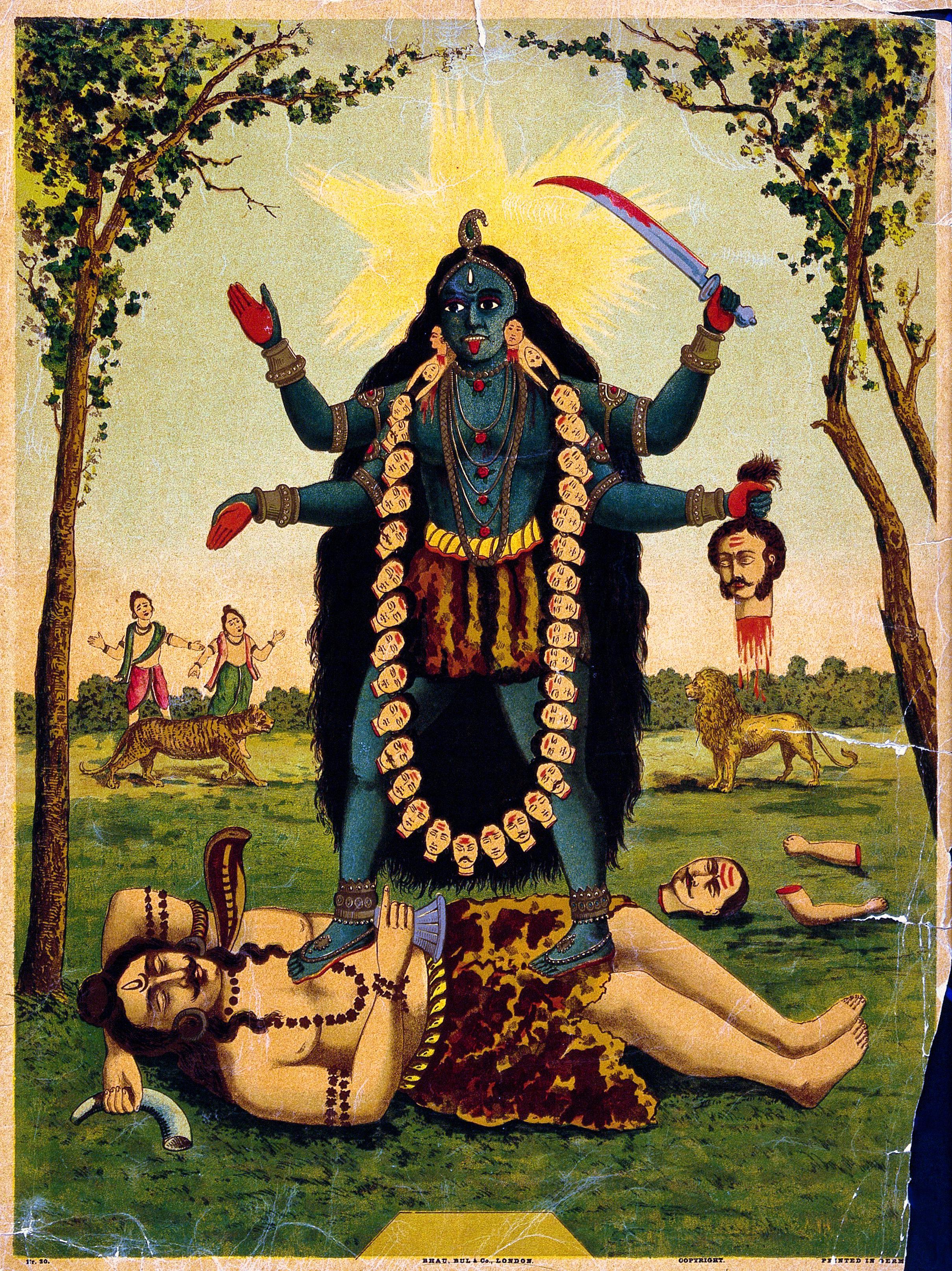
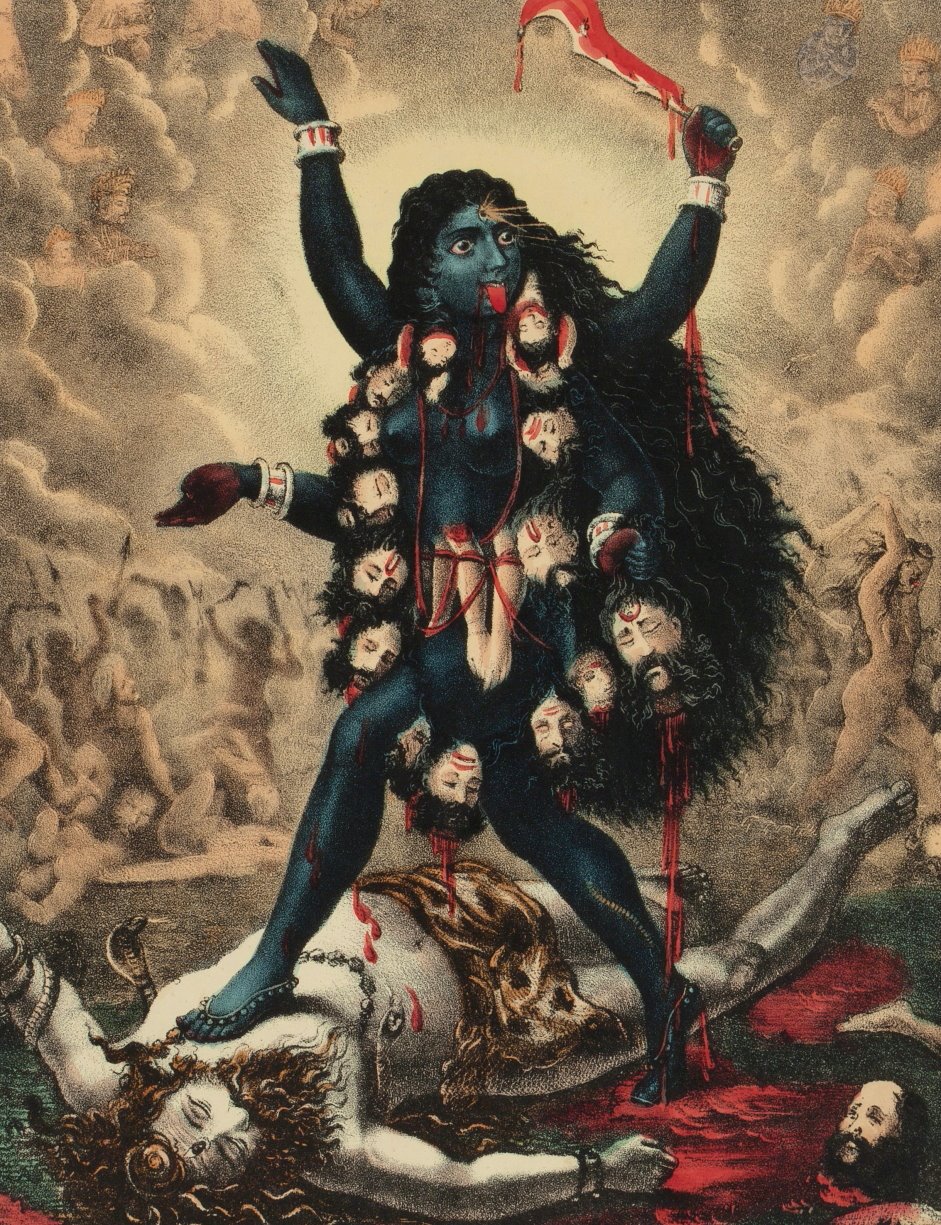
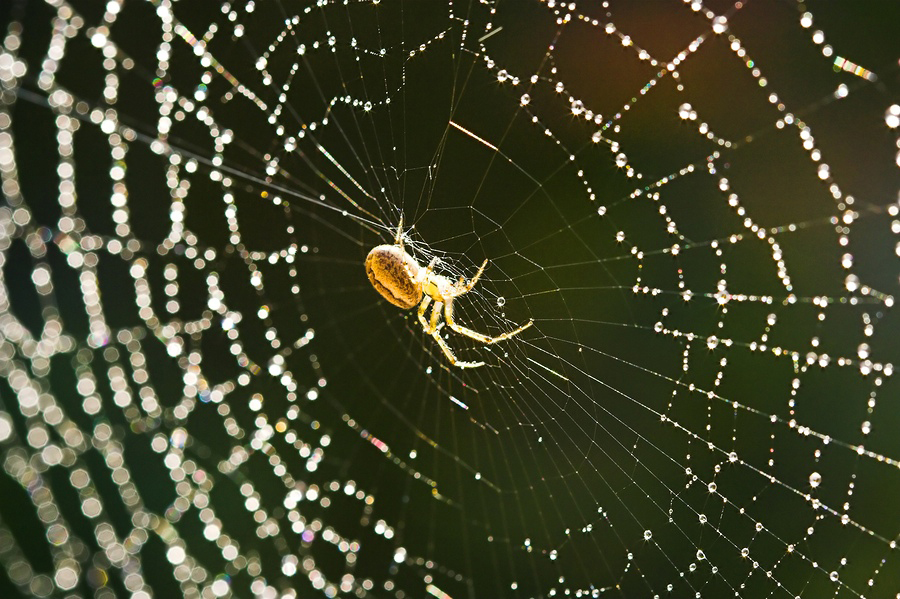
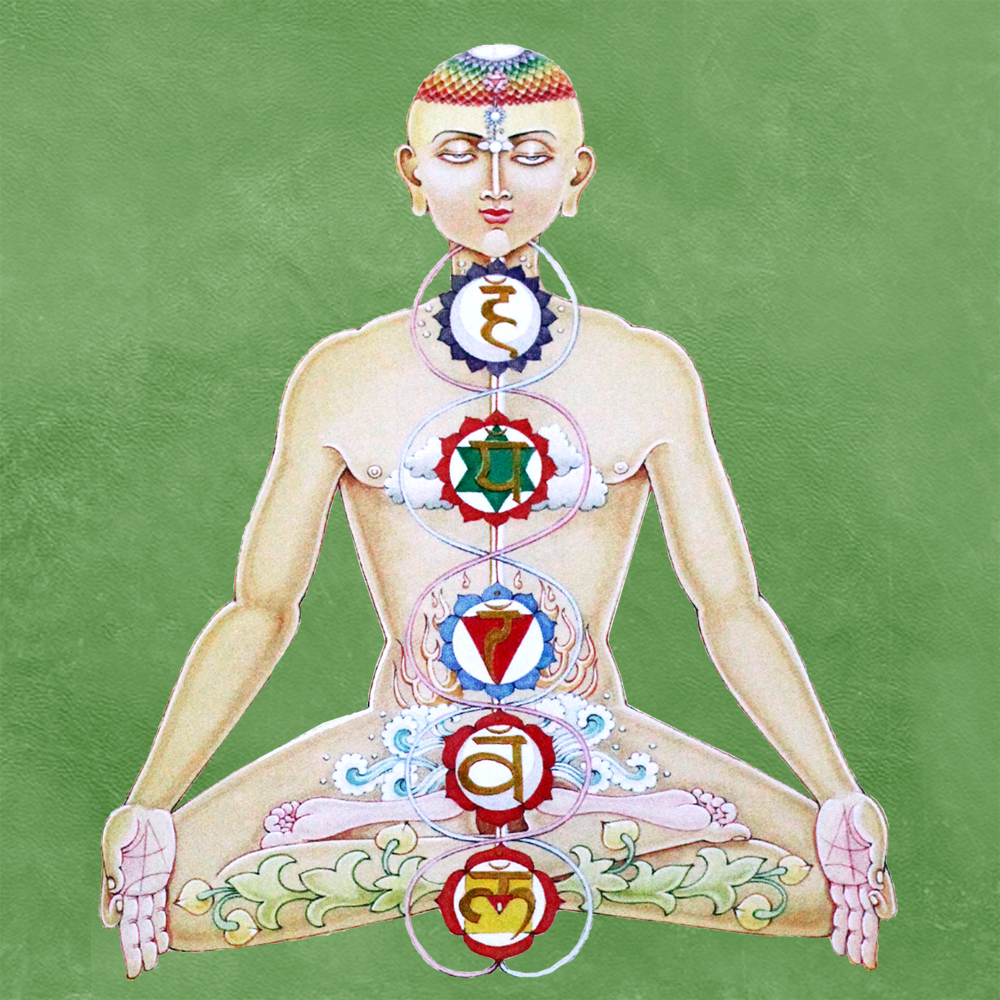
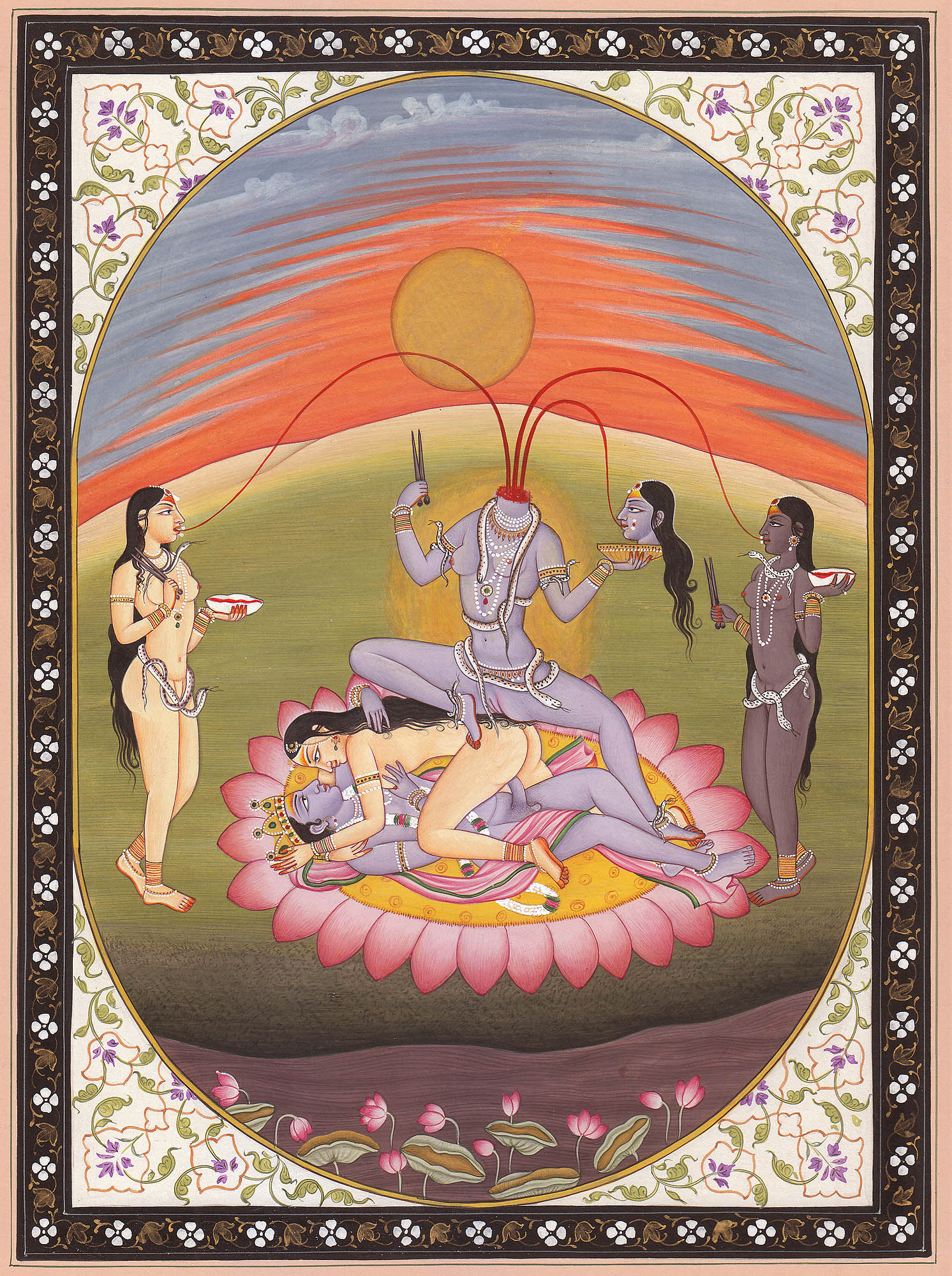
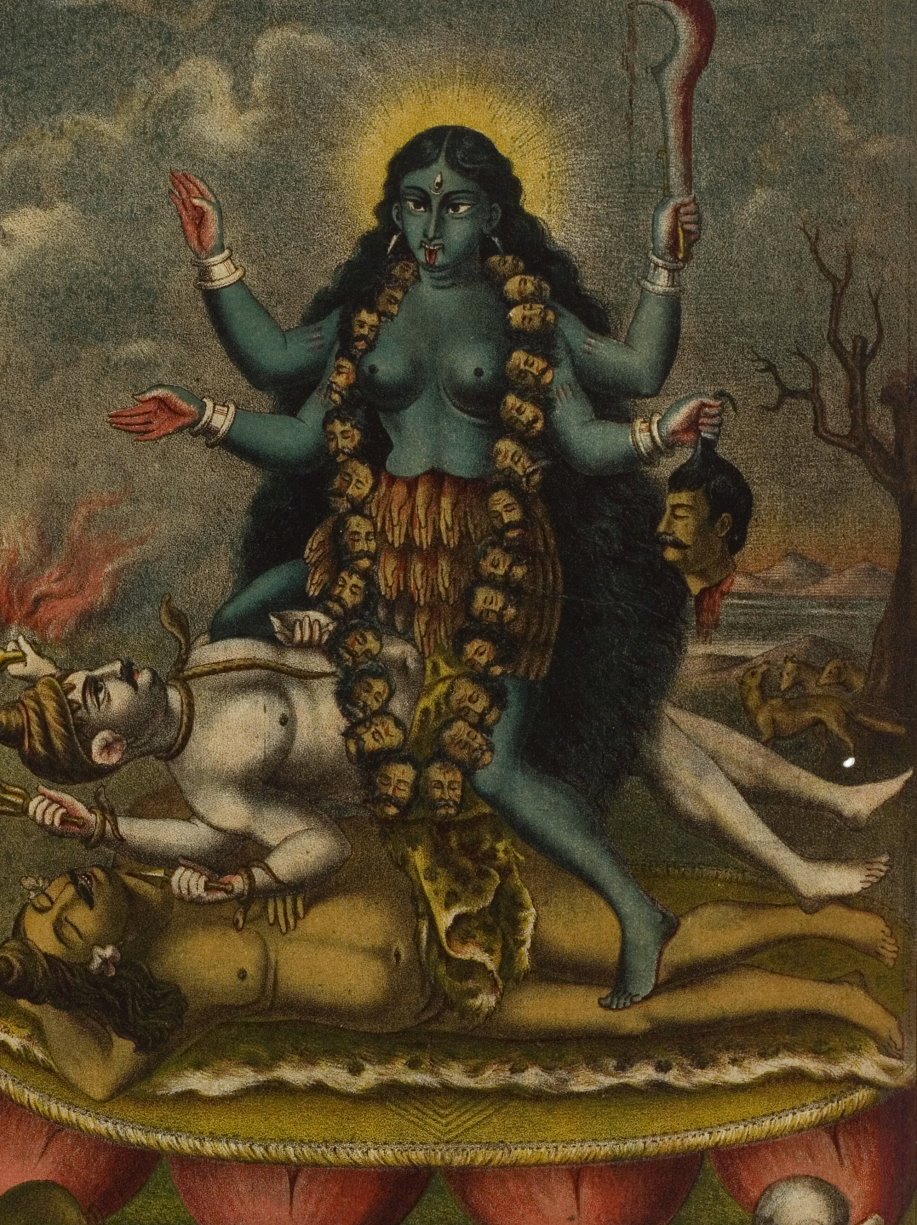
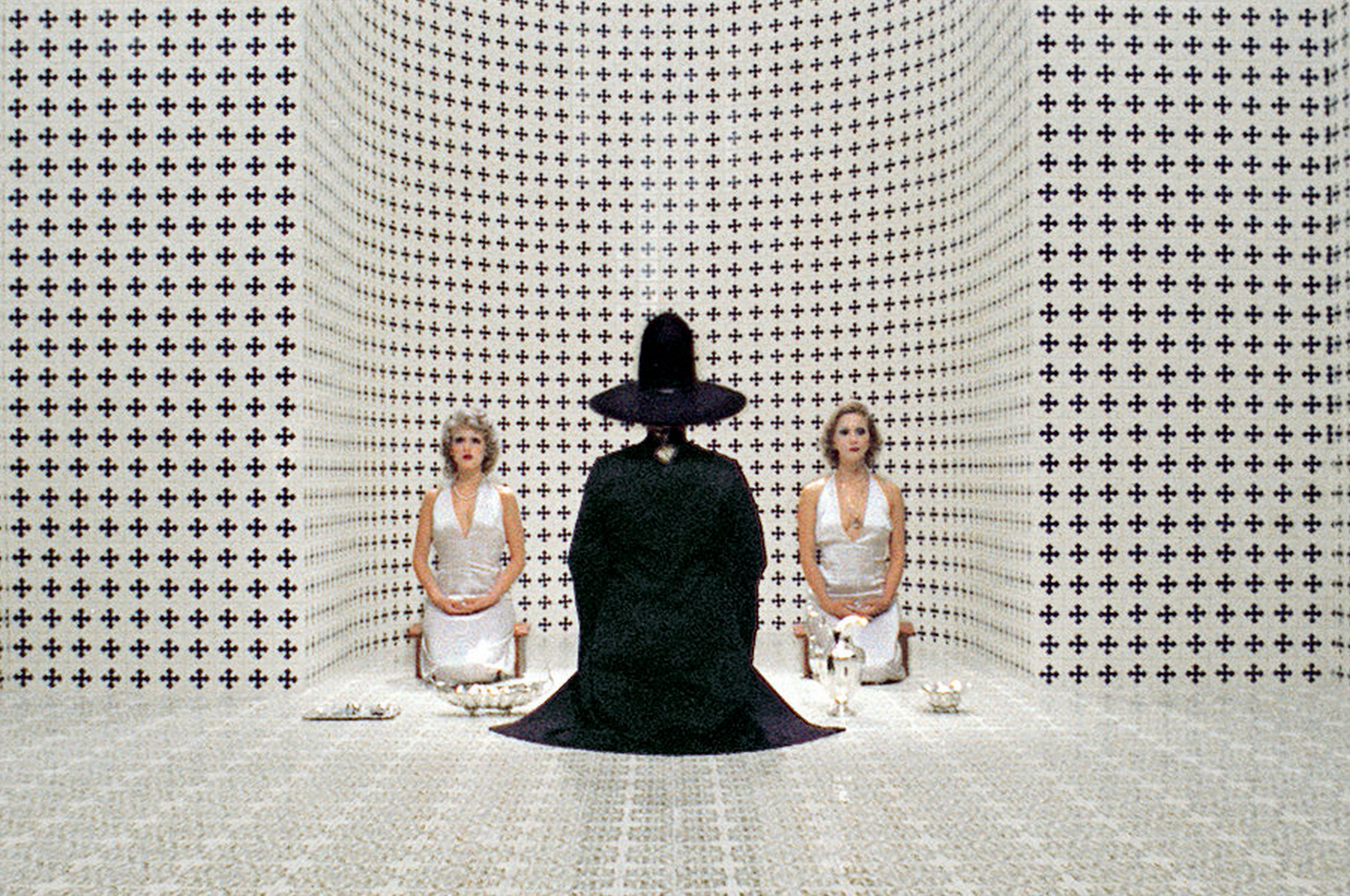
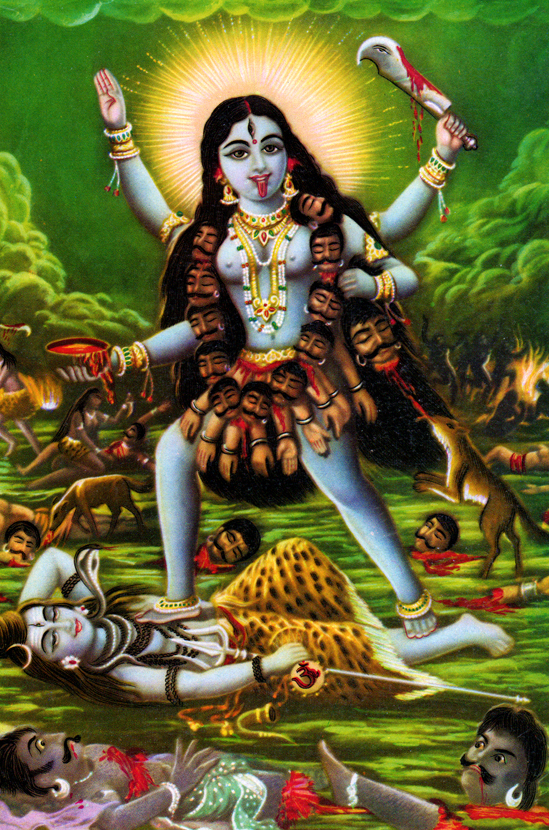
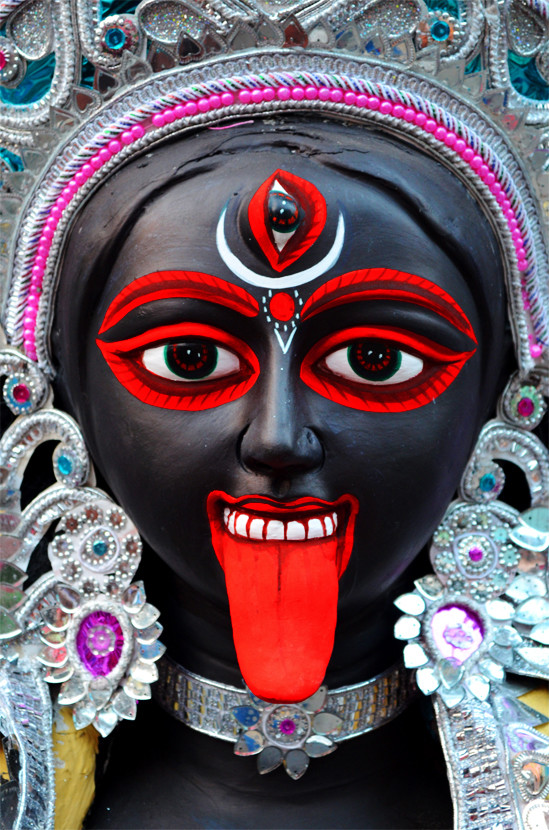
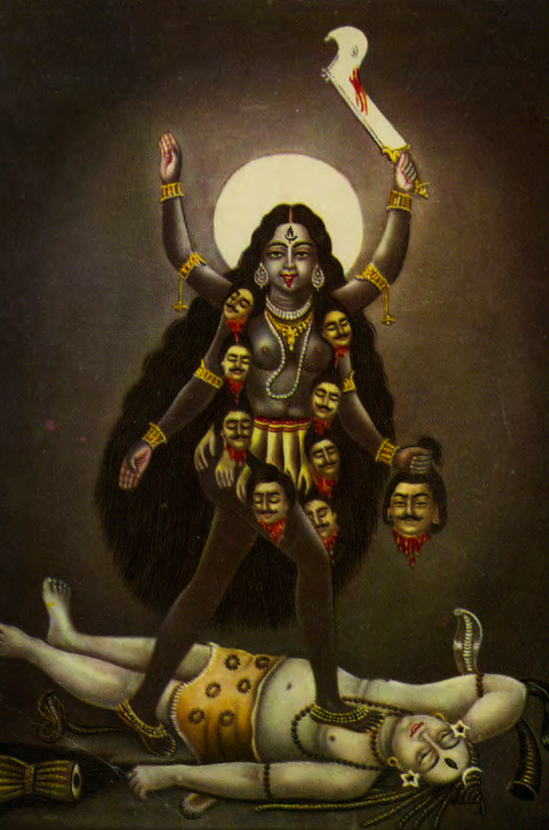
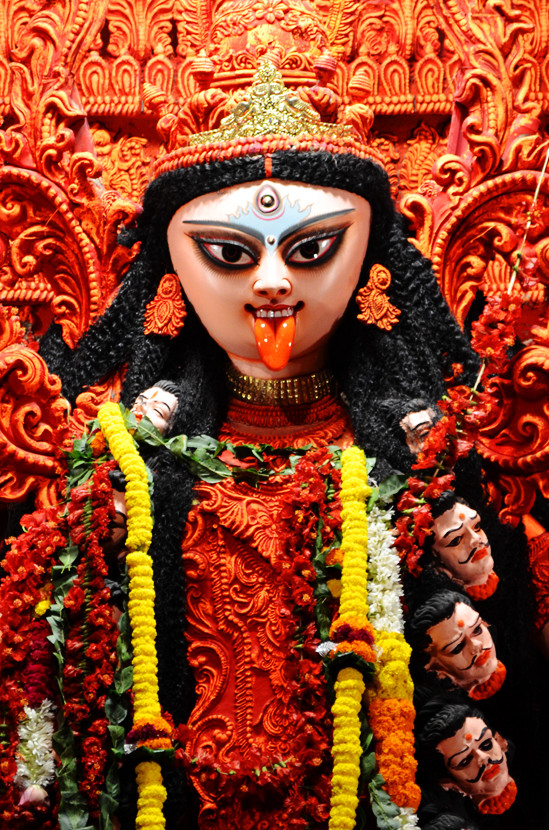
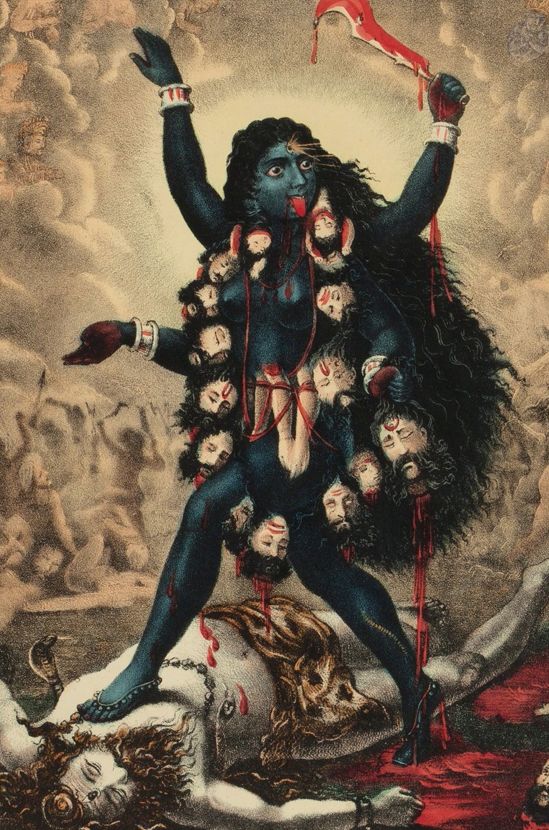
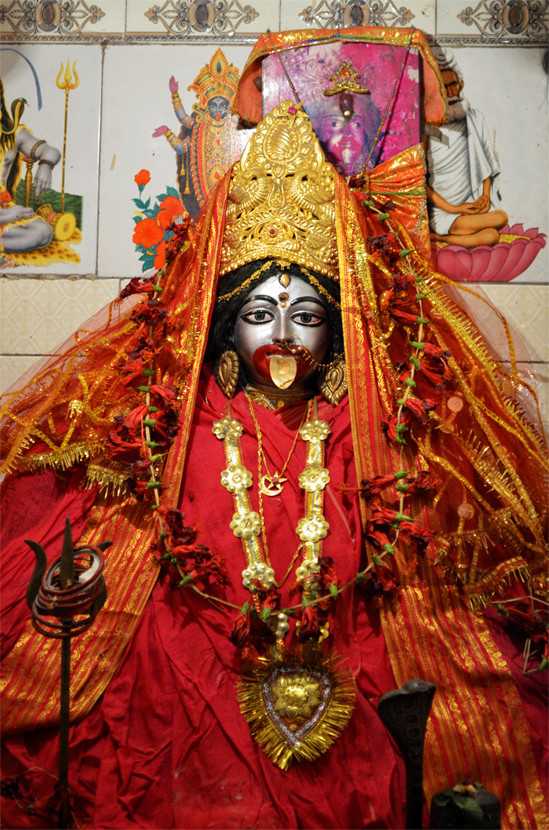
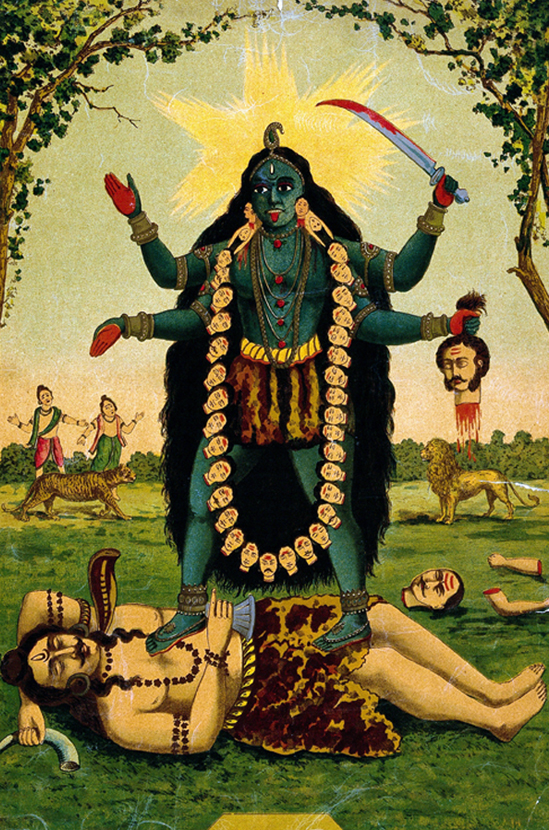
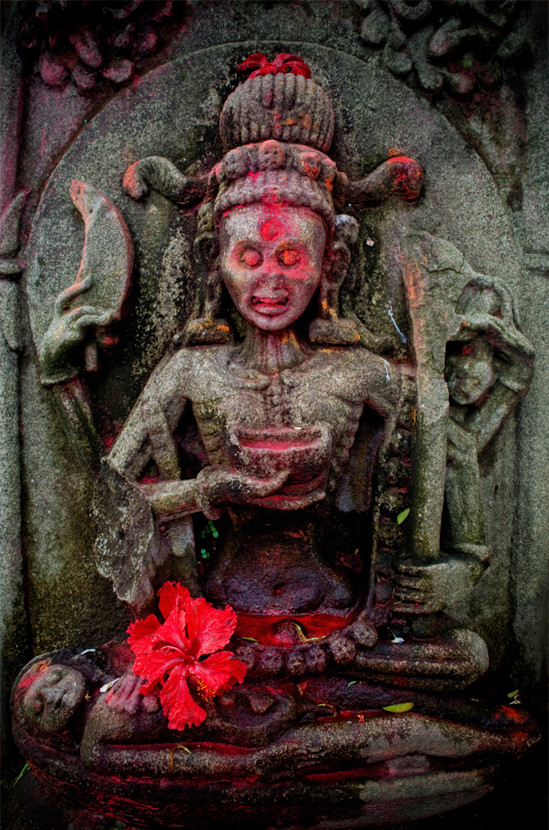
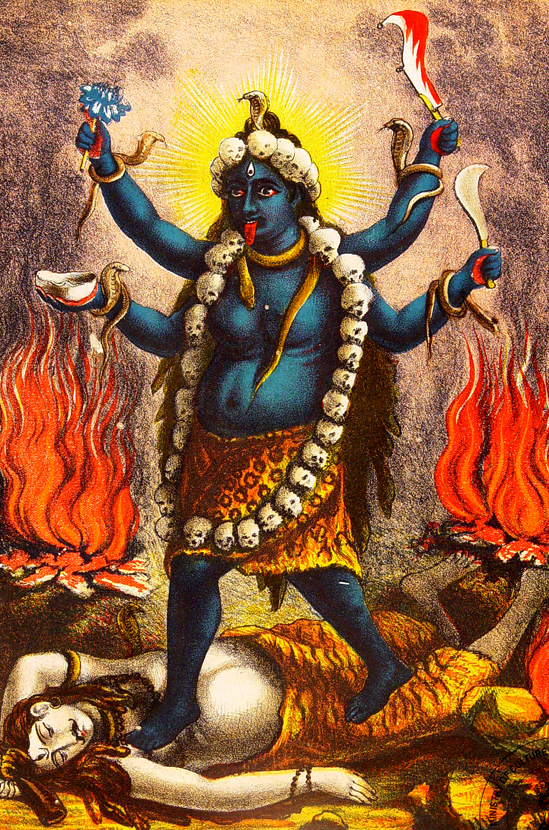
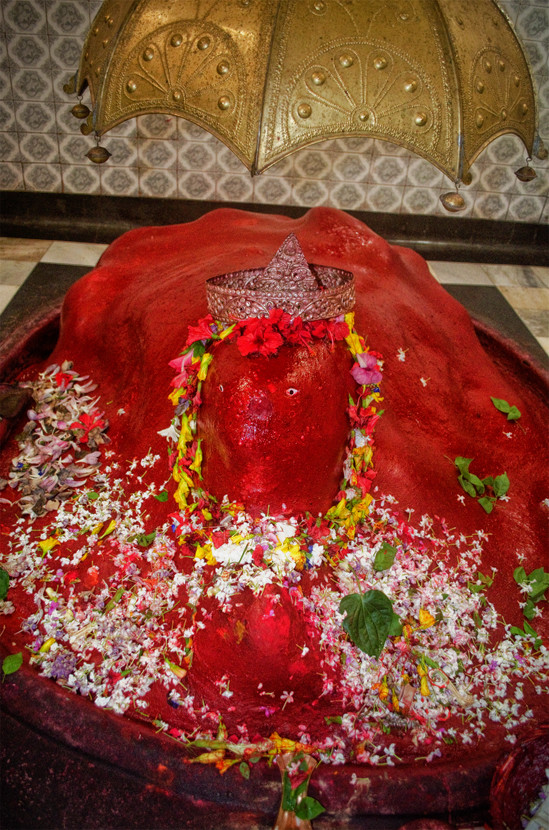
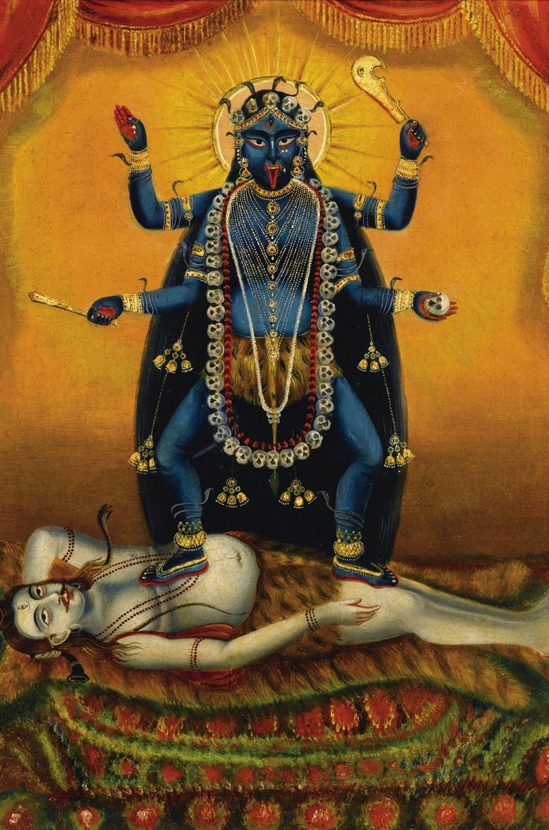
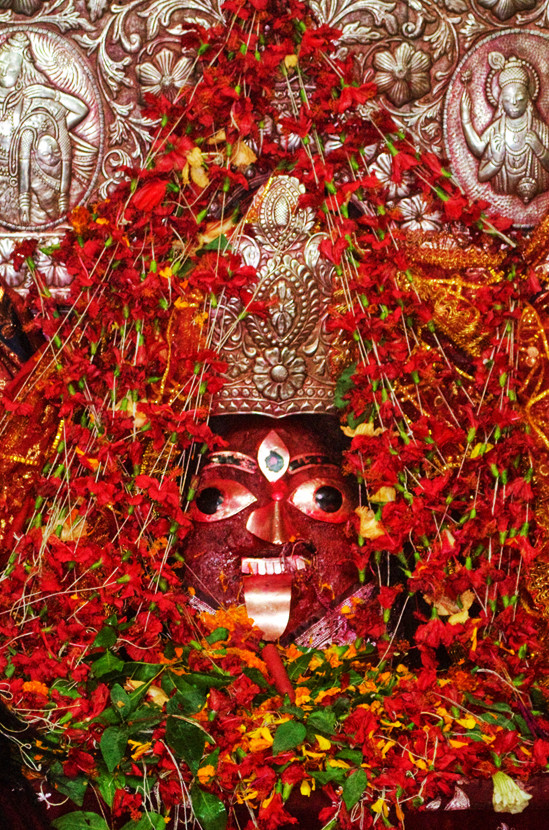
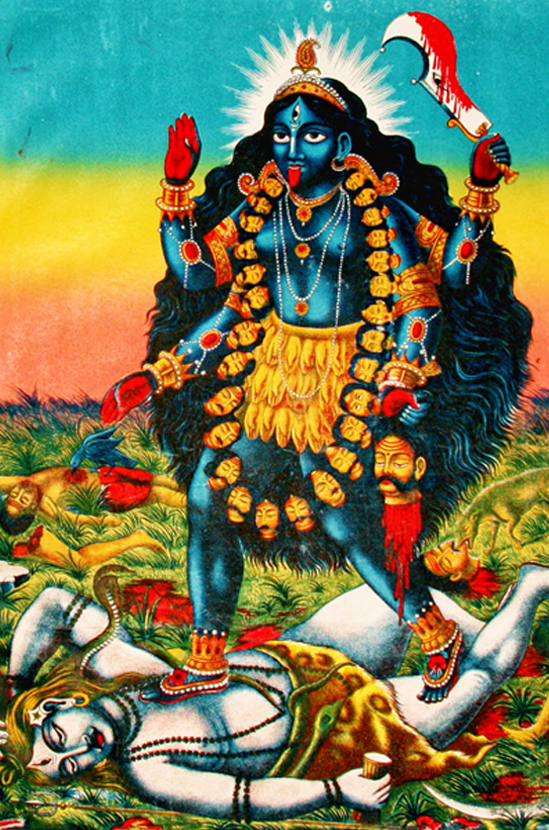
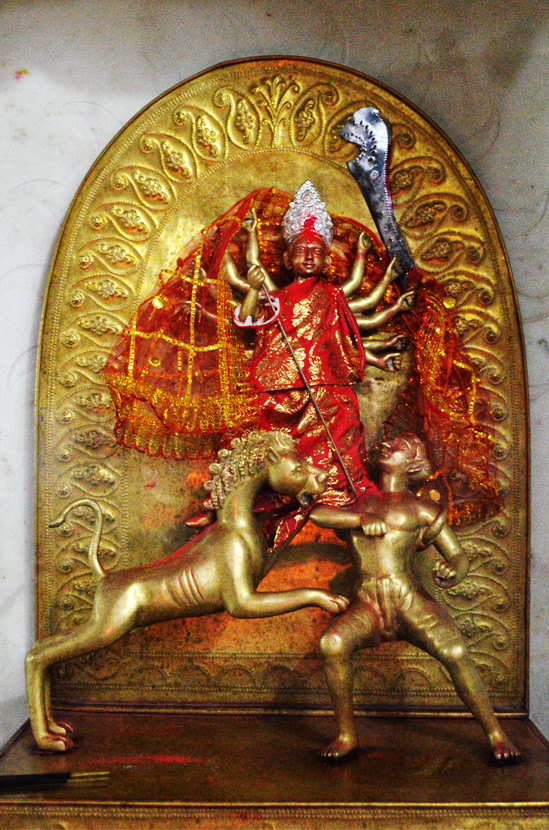
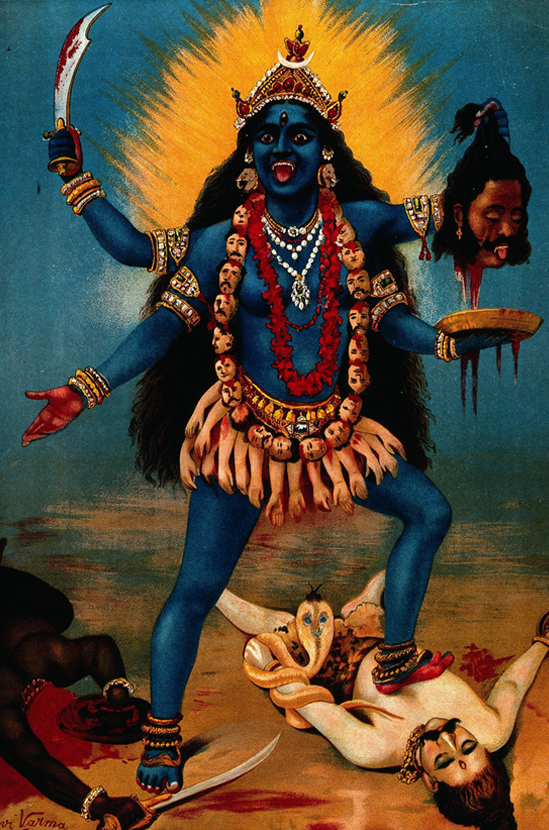
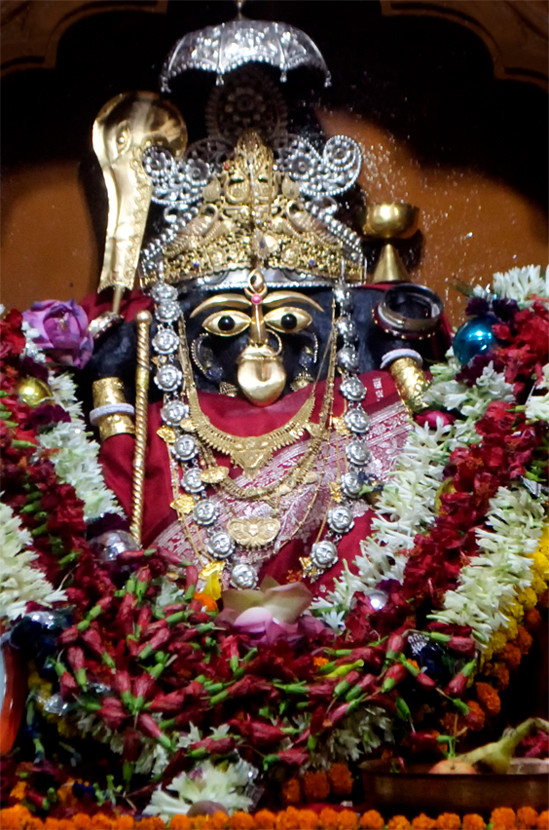
Jai maa kali
Jai Maa Kali. That was a wonderful description. In one of your posts you mention your assistant, Julie. Is she from Mumbai by any chance?
jai kali maa … recently a went kalighat … excited
I love what you have created here. Thank you for sharing all of the great info on the good goddess!
What are those images of almost nude women? Why is sex involved in spirituallity? Why didn’t she appear to you again? Contact me by email. We may be able to relate to each other.
I’m madly in love with the Goddess too and it’s really wonderful to read this account.
Union with Her is certainly the goal of goals. Jai Kali Ma.
Thank you , am happy to have discovered your page. Am also Kali bhakta and in India now . Jai Maa 🙂
Thank you for sharing. Jai Maa
Jai Mata Rani 🙂